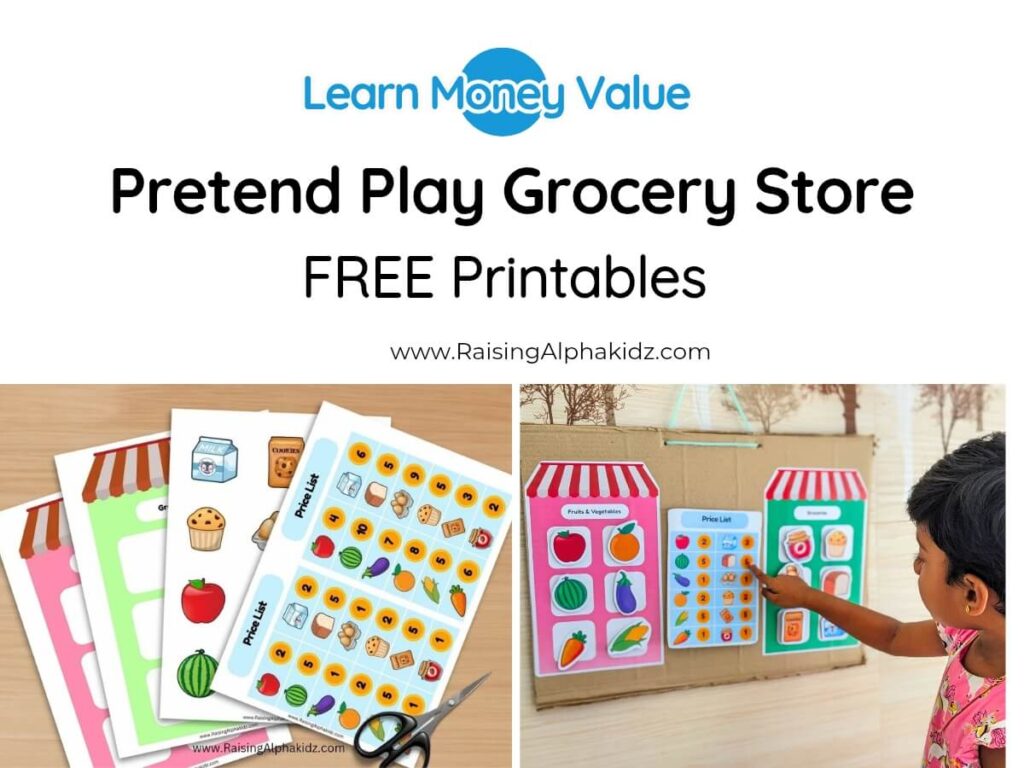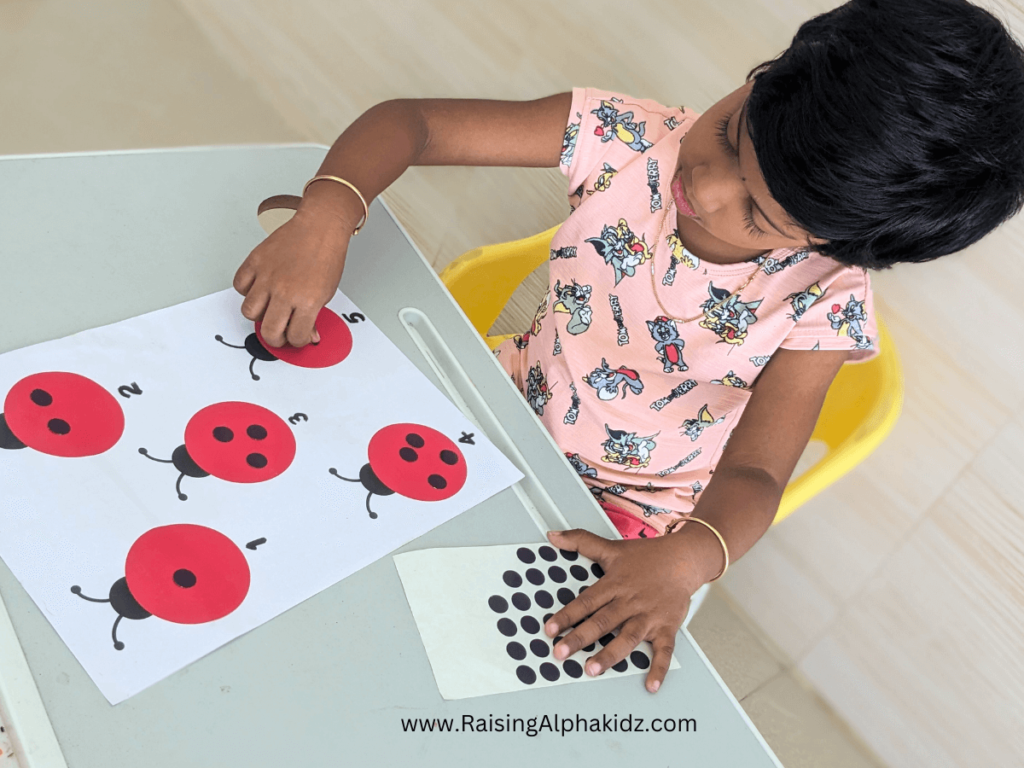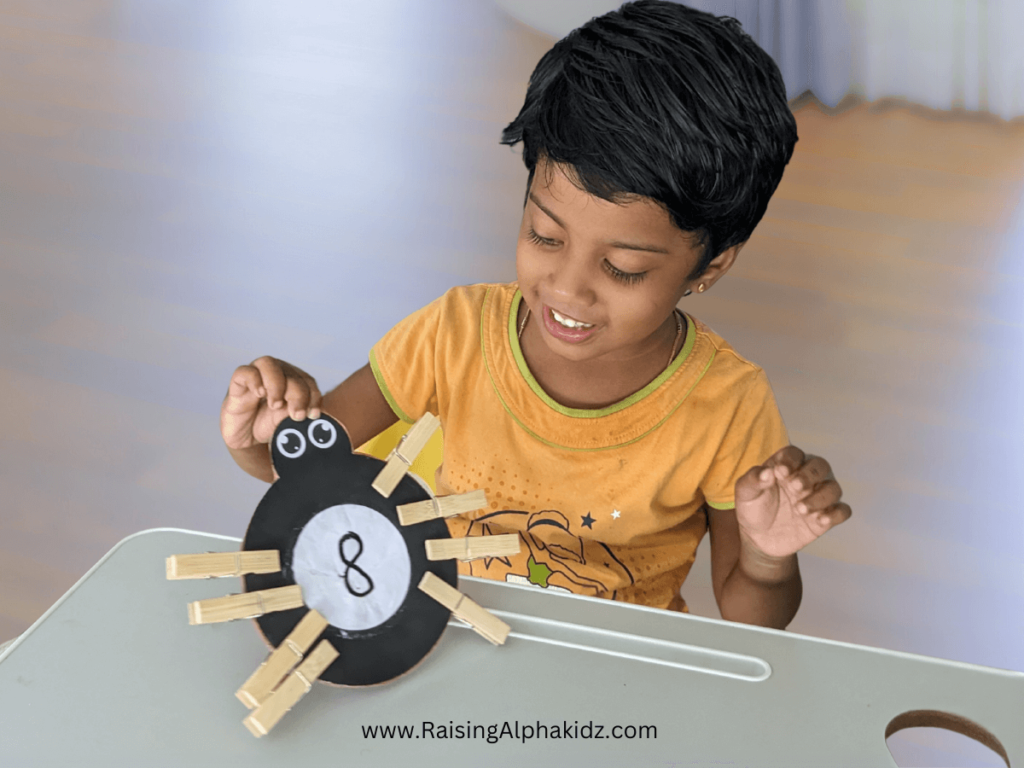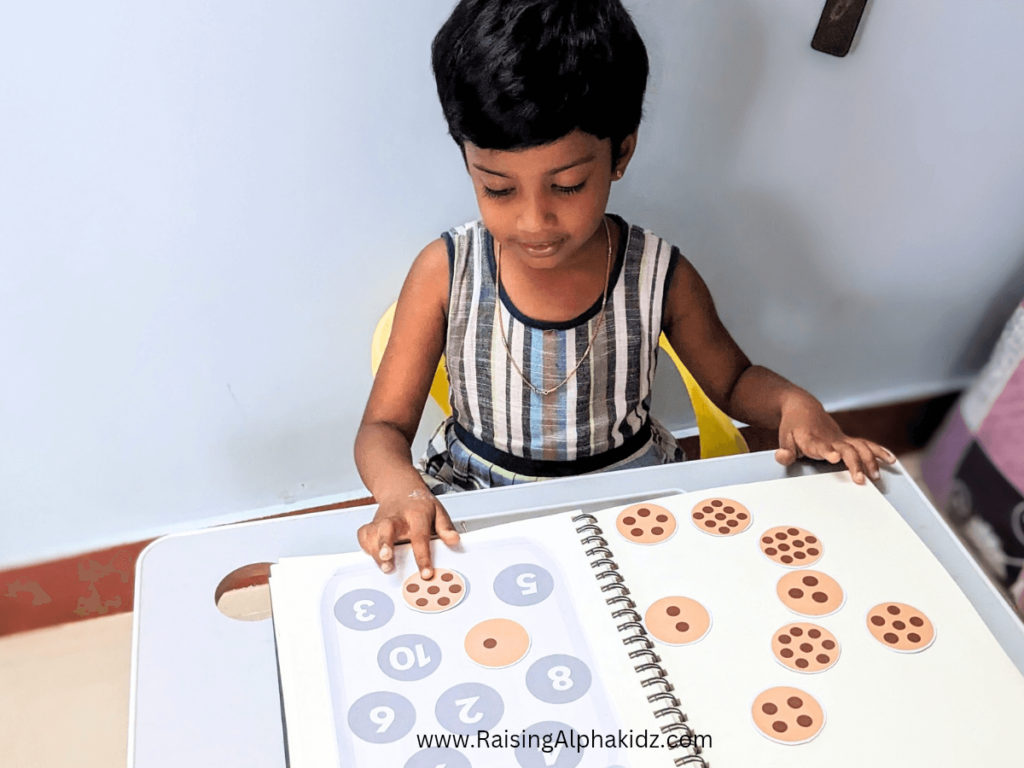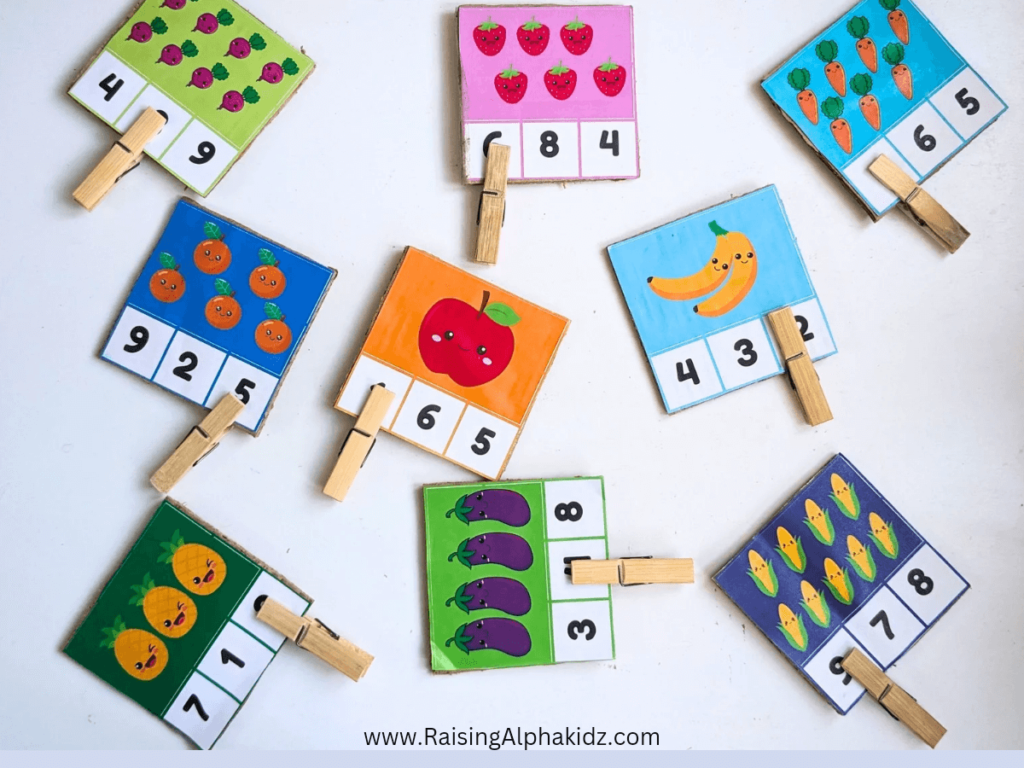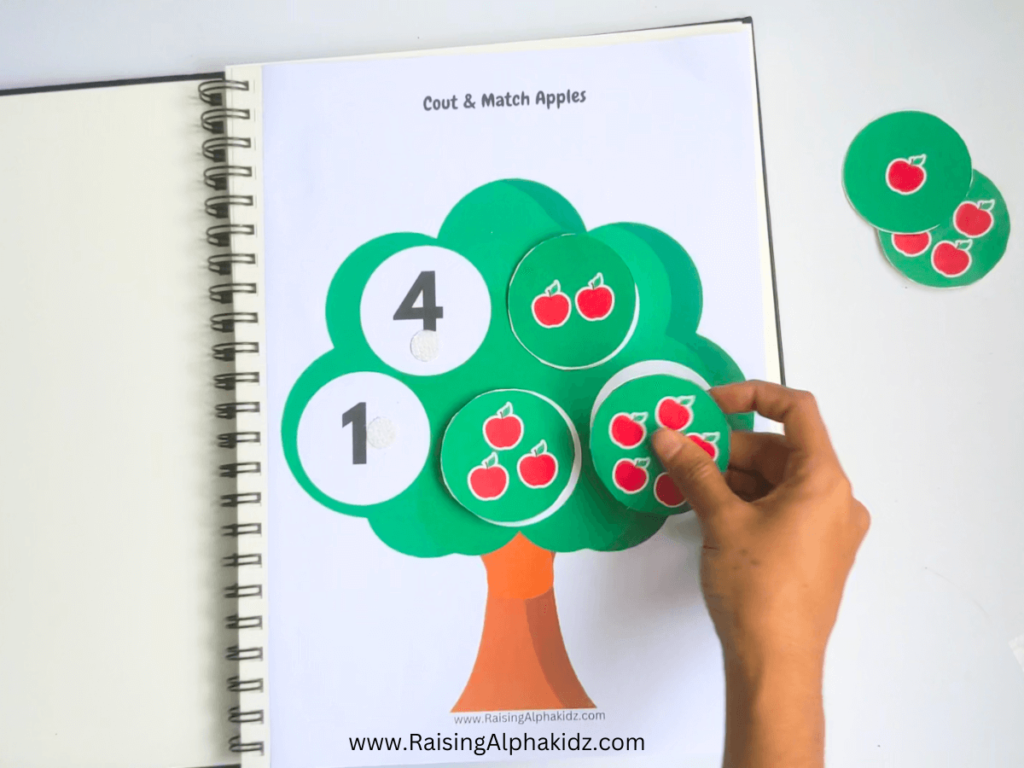Pretend Play Grocery Store Activity (Free Printable) For Preschool and Kindergarten kids
Learning from peers, pretending, and imitating are some of the key skills that helped humans rise to the top of the animal kingdom. Every child naturally imitates the people around them— like our family members, friends, teachers and persons around. This happens because children are curious, and their growing brains constantly seek new experiences and data to process.
Pretend play is one of the best ways to feed their developing minds with meaningful role-playing opportunities. Among all dramatic play ideas, a grocery store setup is especially exciting and evergreen. Since kids often see us buying groceries, recreating that familiar experience via supermarket pretend play teaches them life skills & shopping etiquette at early age.
So today, let’s create a pretend play grocery store activity using the free printable resources I’ve shared, and give little minds plenty of interesting ways to learn and play.
What is Pretend Play
Pretend play (or role play) means when kids act out real-life situations or imaginary stories by pretending to be someone else or using objects in a make-believe way.
Dramatic play Examples:
- A child pretending to be a shopkeeper and selling vegetables.
- Playing doctor and patient with toys.
It’s basically kids using their imagination to “be” or “do” something they see in real life—and through that, they learn, explore, and practice important life skills.
You Might Also Like: Pretend Play – Mud Pizza Making
Material Needed
- Pretend play grocery store Free Printable ( Download below)
- Scissors
- Cardboard
- Velcro dot stickers
- Play money or real coins
Sneak peak printable
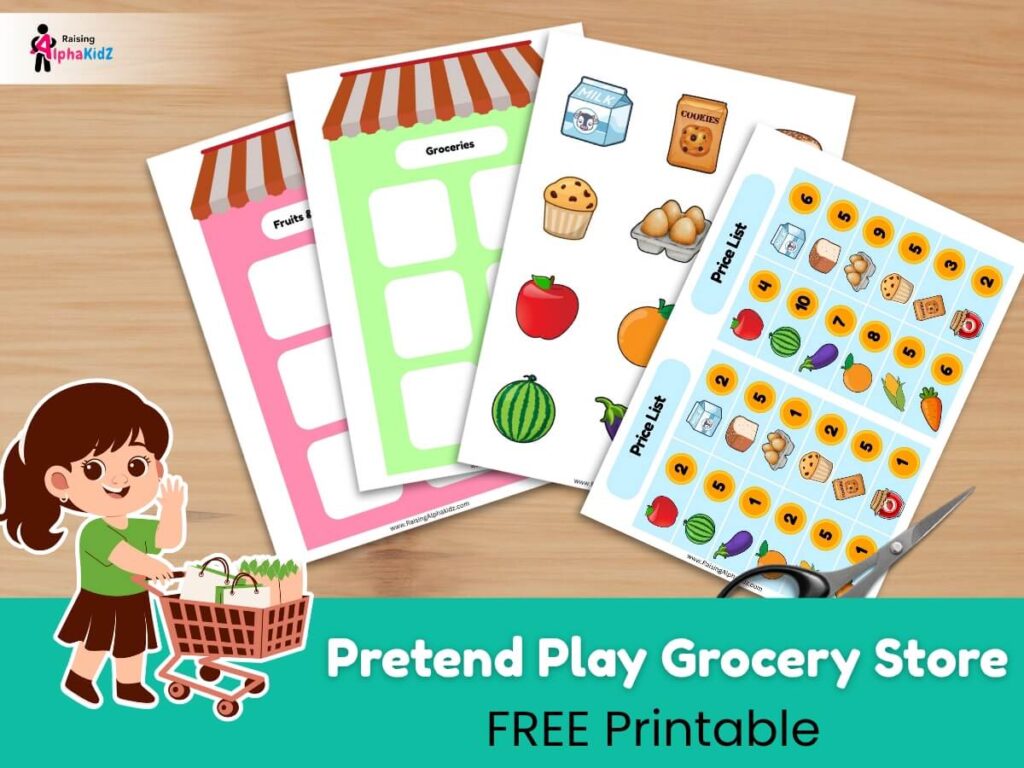
What is in Pretend Play Grocery Store Free Printable Pack?
The Pretend Play Shop Activity Free Printable Pack comes with 4 colorful and engaging pages to make printable grocery store at home which is suitable for preschool and kindergarten kids.
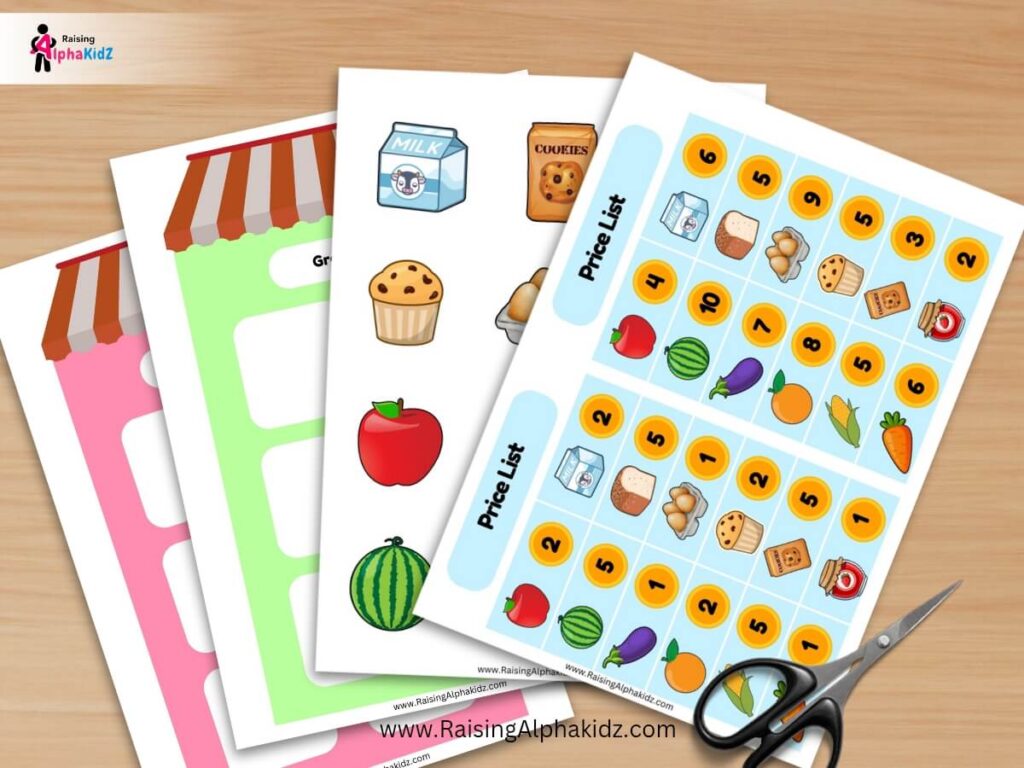
Page 1: Fruits & Vegetables Store Display Printable
This printable features a store display with a signboard titled “Fruits and Vegetables” at the top. Below the sign, there is a shelf with 6 grids (squares) where kids can stick the fruit and vegetable cutouts.
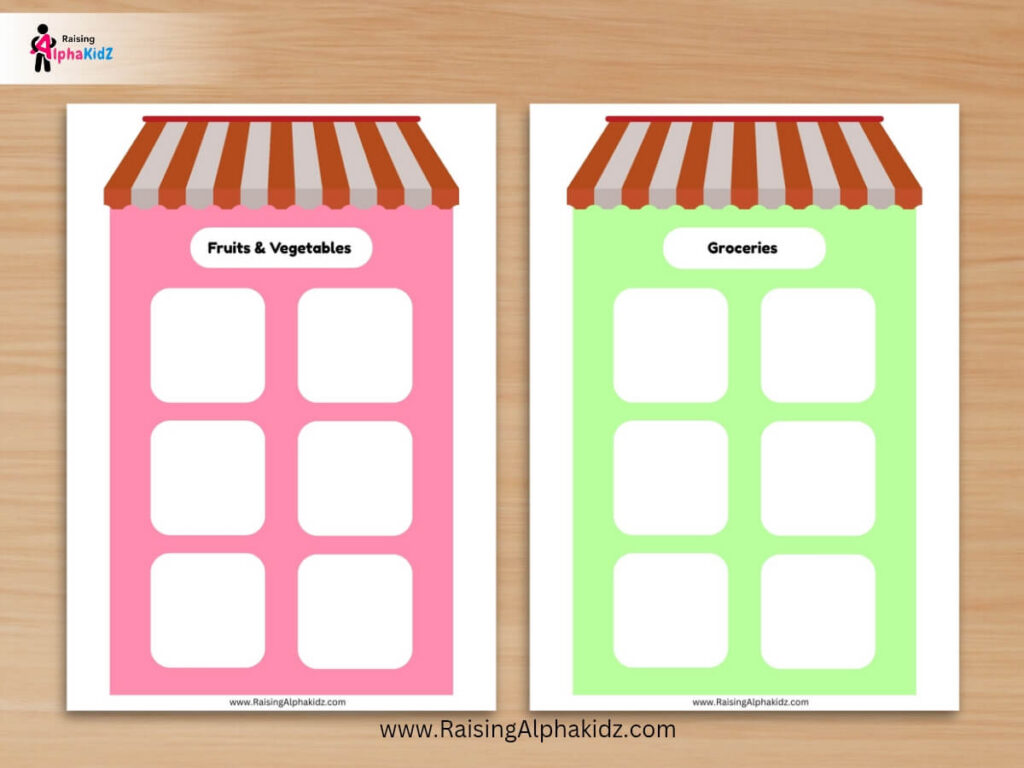
Page 2: Pretend Play Grocery Store Display
Similar to the fruits and vegetables store, this printable has a display shelf with 6 grids. Kids can place the grocery item cutouts here.
Having two different display cases helps children learn how to categorize items while playing pretend play grocery store.
Page 3: 2 in 1 Price Tag List
This page provides price tags for each item. There are two sets of tags:
- Basic set (priced 1–5): For preschool-level pretend play.
- Advanced set (priced 1–10): For kindergarten-level pretend play.
This allows you to adjust the activity based on your child’s age and skill level.
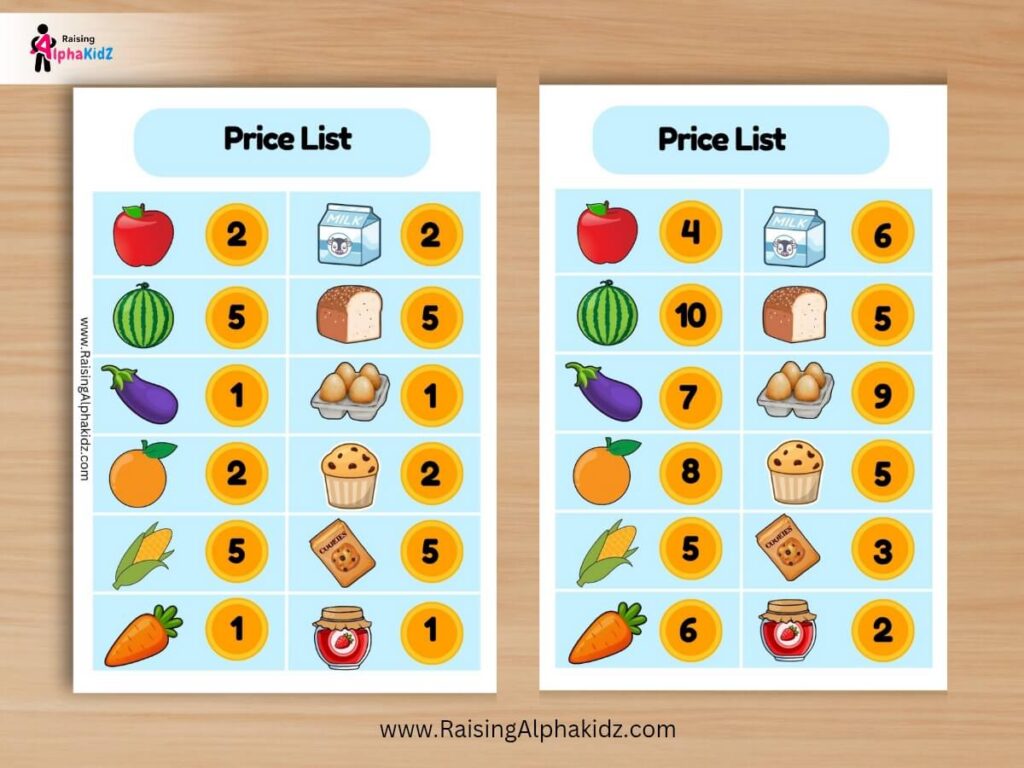
Page 4: Grocery Items
This printable includes 12 grocery items to use as commodities in the pretend grocery store setup:
- Fruits & Vegetables: Apple, Orange, Corn, Watermelon, Brinjal, Carrot
- Grocery Items: Bread, Egg, Jam, Milk, Muffin, Cookies
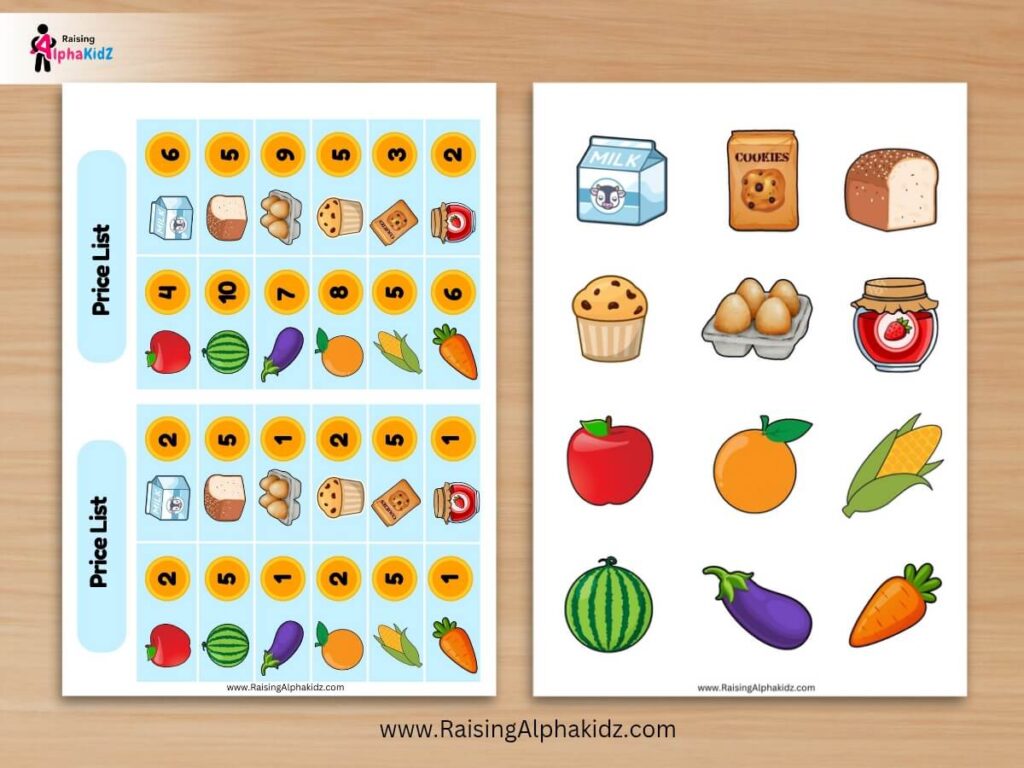
How to Make Pretend Play Grocery Store with Free Printables
Step 1: Download & Print
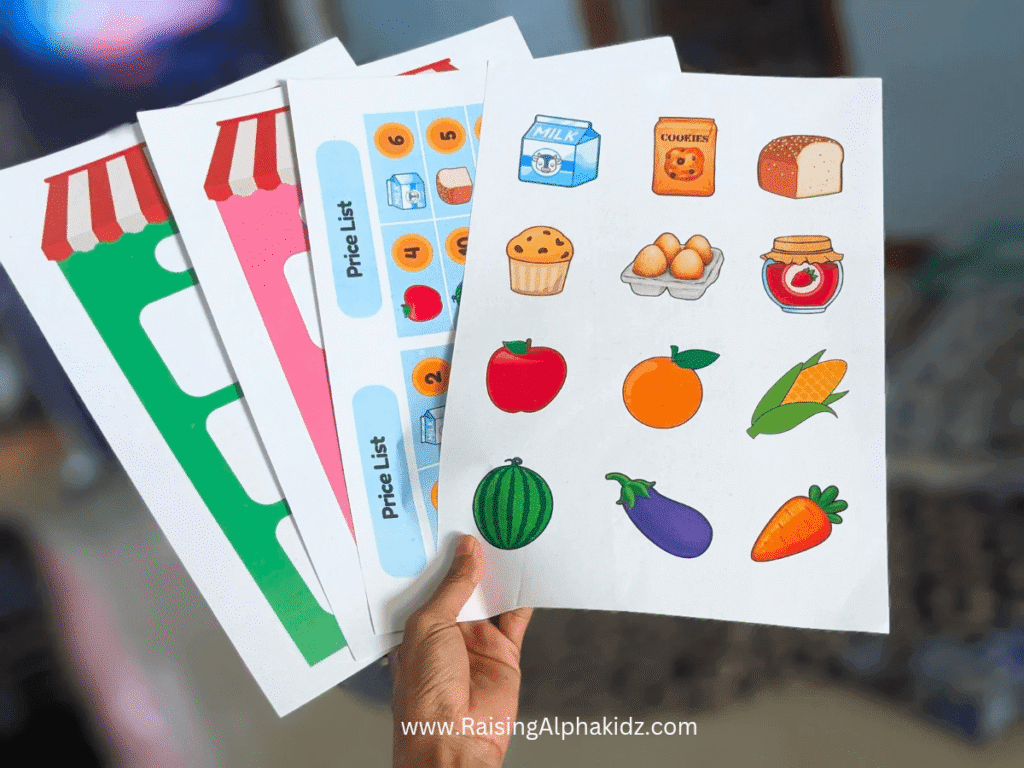
Click the download button below and print the free Pretend Play Grocery Store Printables on either sticker paper or regular paper.
Step 2: Cut the Grocery Items
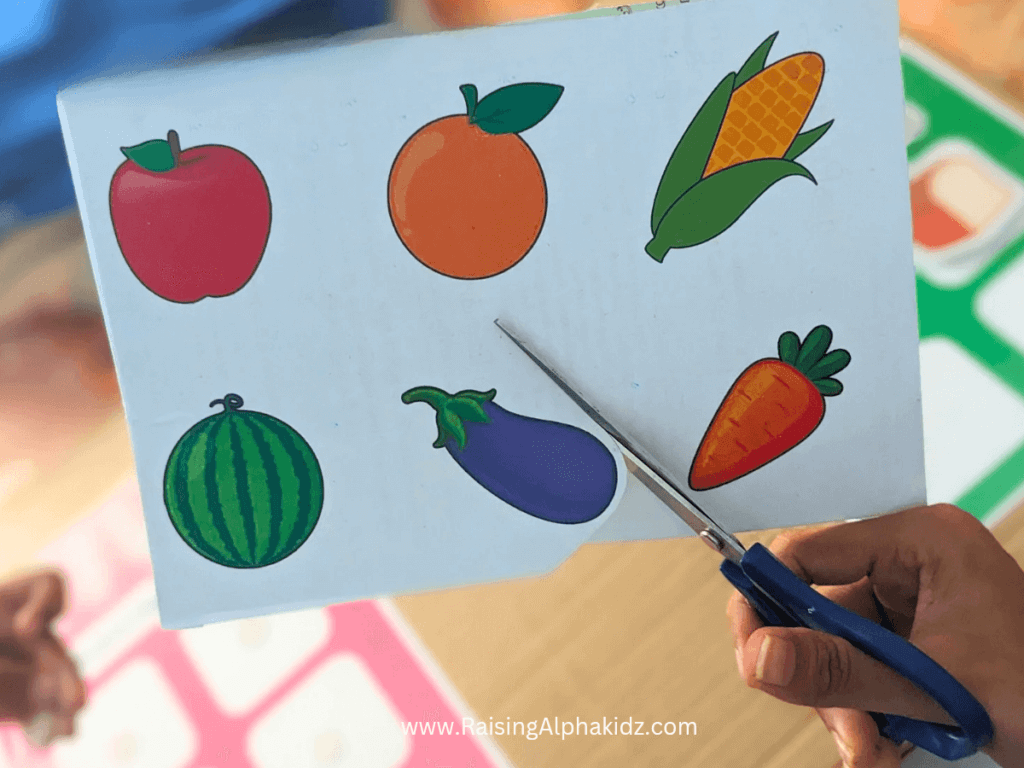
Carefully cut out all the fruits, vegetables, and grocery items. For durability, paste them onto sturdy cardstock or cardboard.
Step 3: Prepare the Pretend Play Grocery Store Display
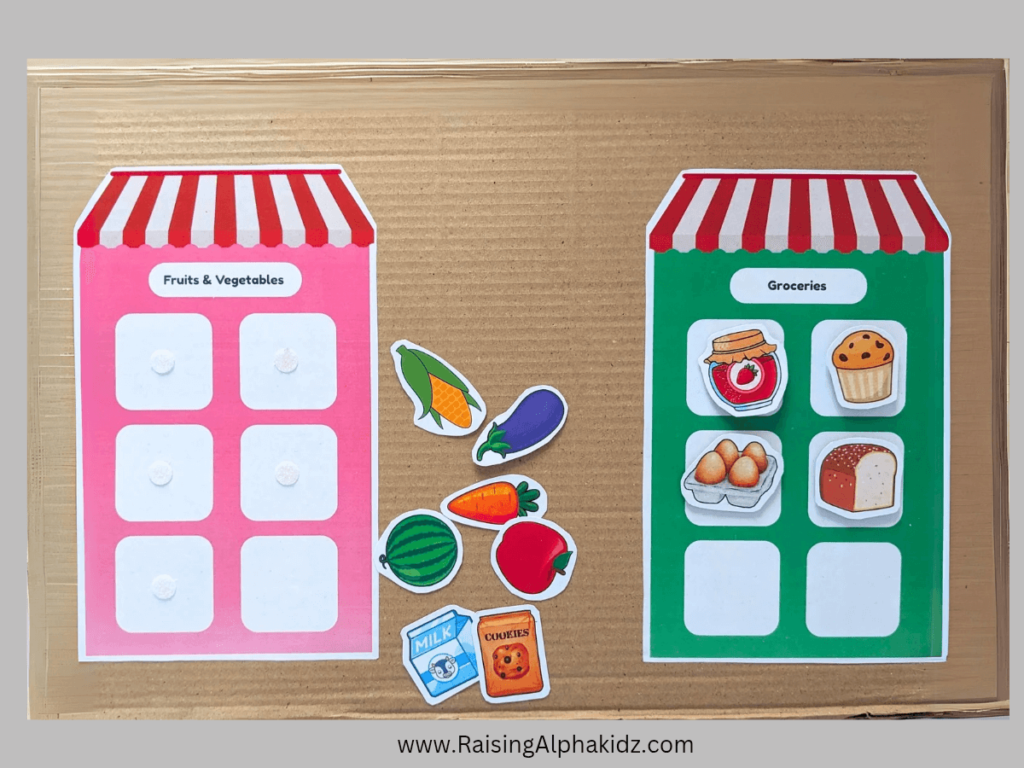
Paste the store display sheets on a large piece of cardboard. Place the Fruits & Vegetables Display on one side and the Grocery Items Display on the other, leaving space in the middle to attach the price list.
Step 4: Attach the Grocery Items
Stick Velcro dots to the back of each cutout and on the store display grids. This way, kids can easily attach and remove items while playing—again and again!
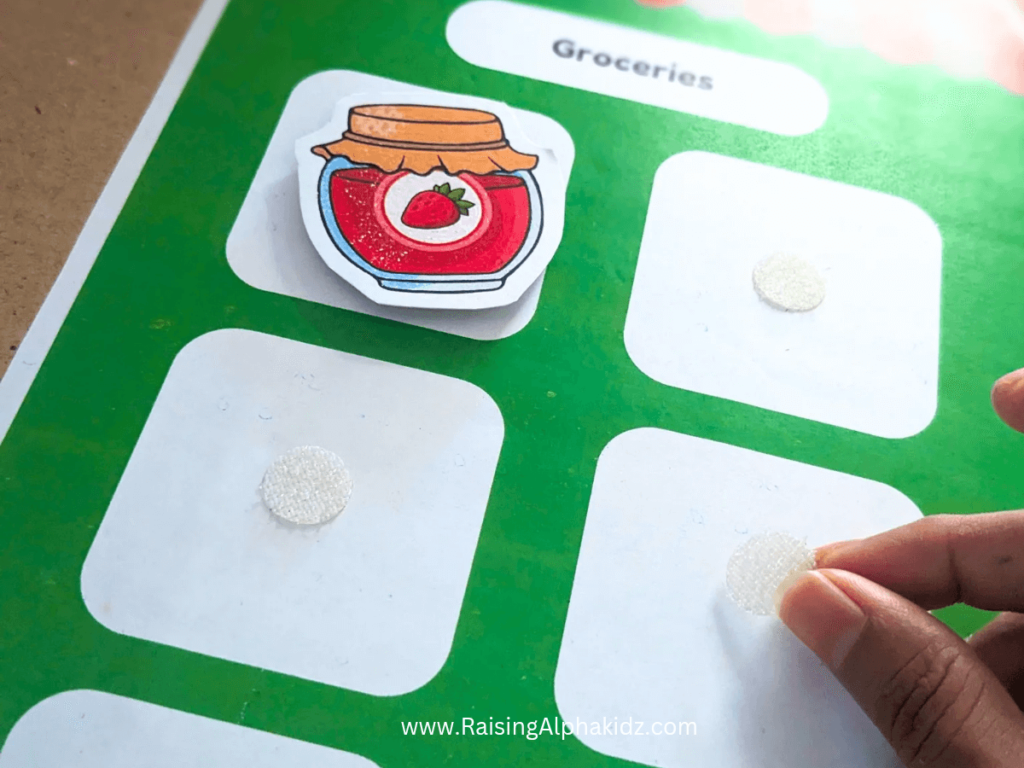
Step 5: Add the Price List Cards
Cut out the price list cards from the printable. Fix the basic card (₹1–₹5) in the center for preschoolers, or switch to the advanced card (₹1–₹10) for kindergarten-level play.
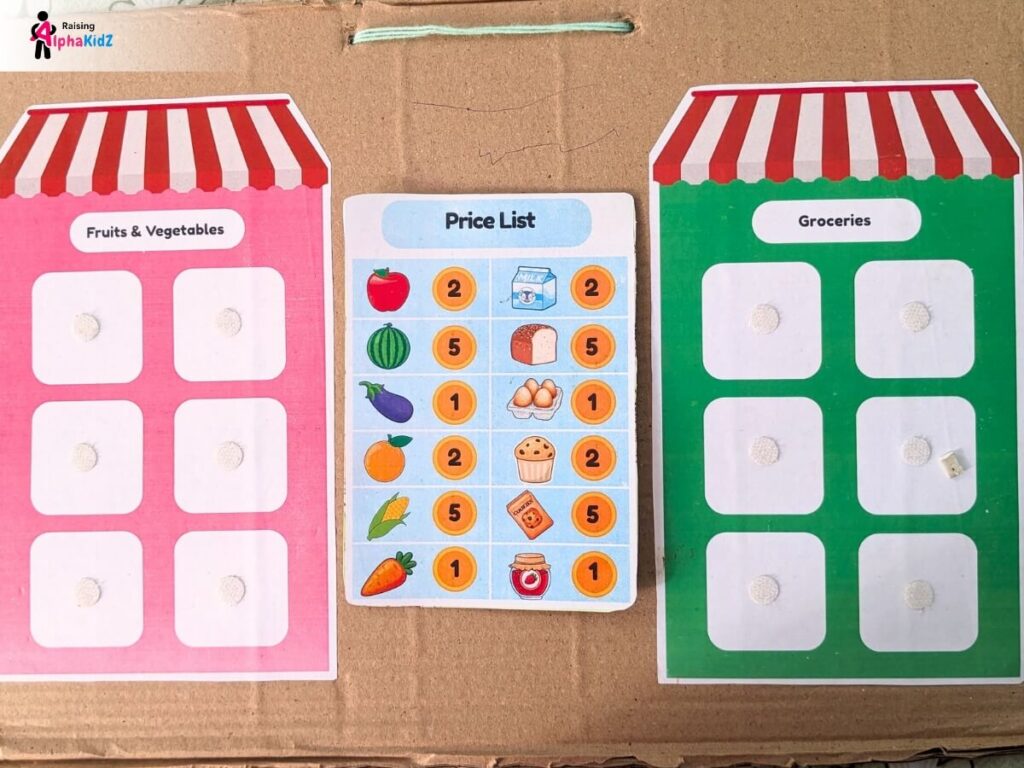
Step 6: Set Up Your Dramatic Play Grocery Store
Punch two holes at the top of the cardboard, thread a string through, and hang the pretend play grocery store setup on a wall at your child’s height.
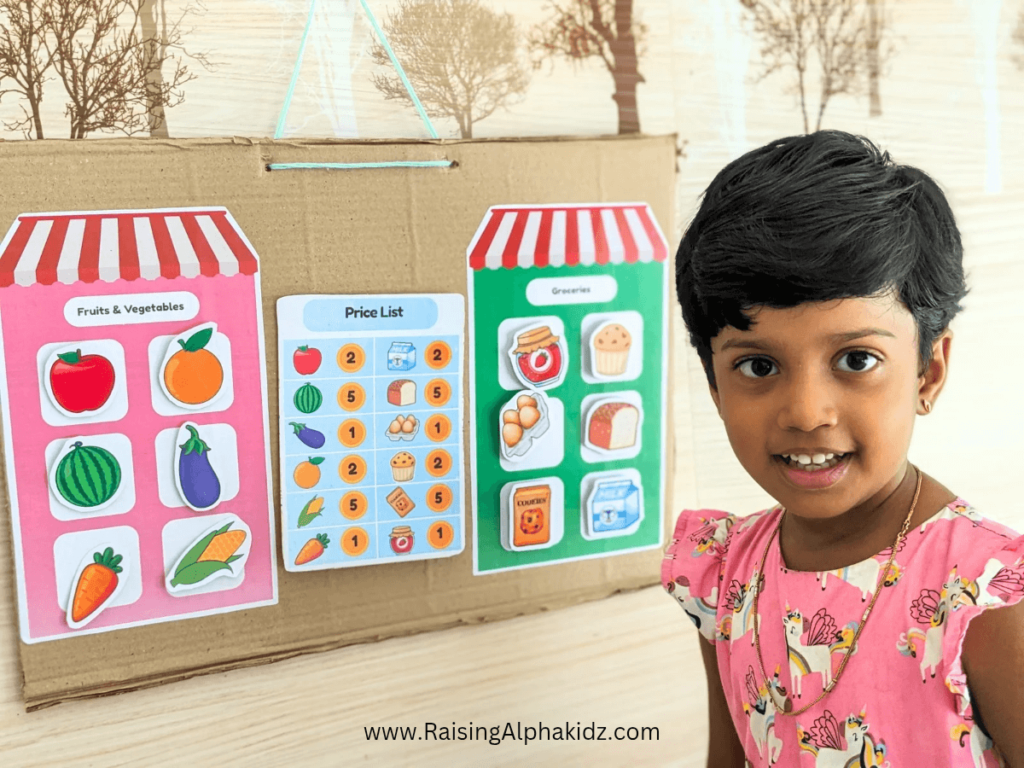
Now your DIY Pretend Play Grocery Store is ready! Kids can stock shelves, stick price tags, and enjoy endless role-play fun.
How to Play with the Pretend Play Grocery Store
Preschool Version (Basic Play)
Step 1: Child as Shopkeeper
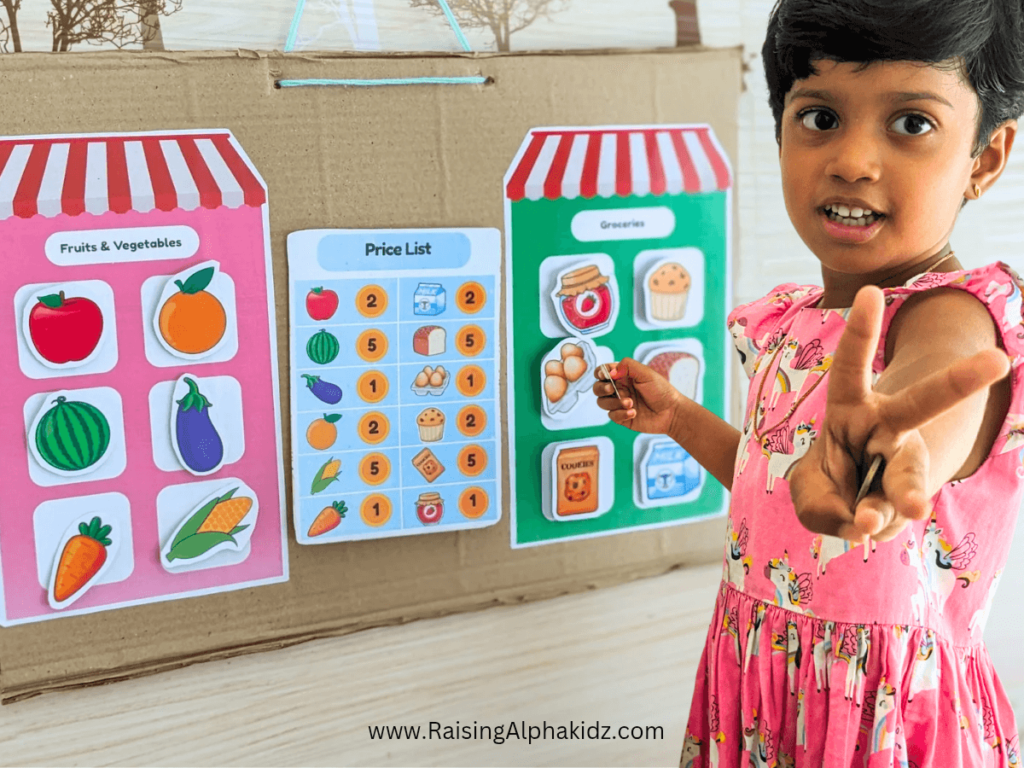
- Parents play the customer, and child is the shopkeeper.
- You should ask for something from the store (e.g., “Can I buy an apple?”).
- Child checks the basic price list (1–5), tells you the price, and gives you the item.
- Hand them a matching coin, and let them “collect” the money.
Step 2: Child as Customer
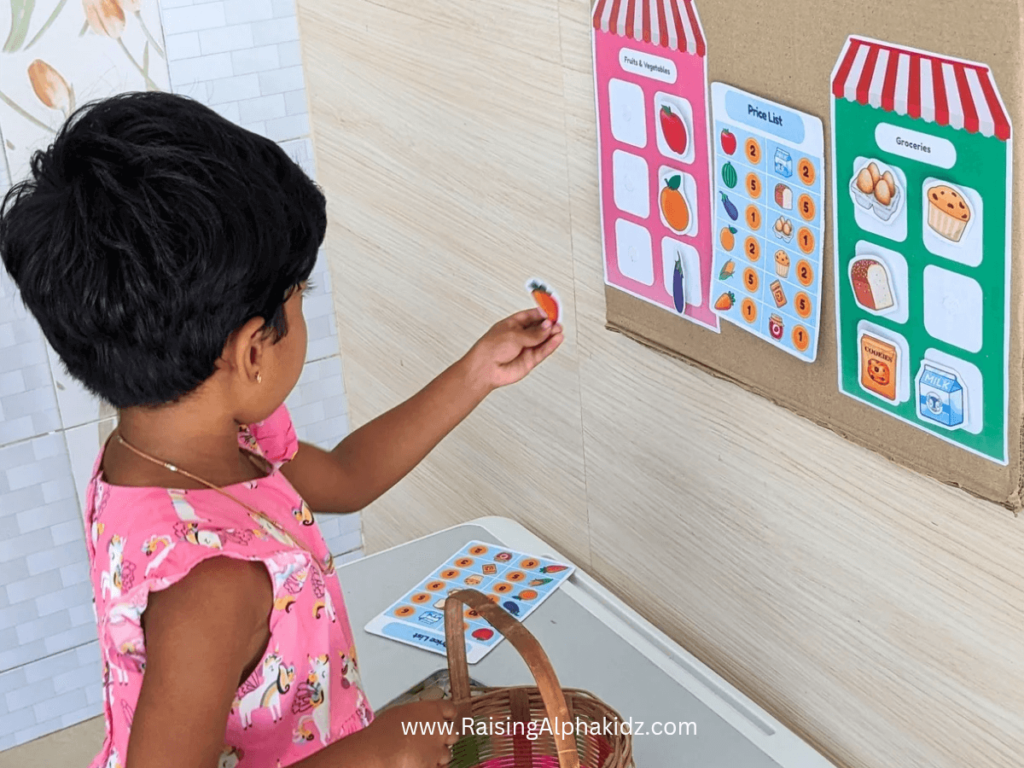
- Switch roles! You be the shopkeeper, and let your child be the customer.
- Ask them to request items, look at the price, and pay with the correct coin.
- This teaches kids how to match numbers and recognize coin values.
Kindergarten Version (Advanced Play)
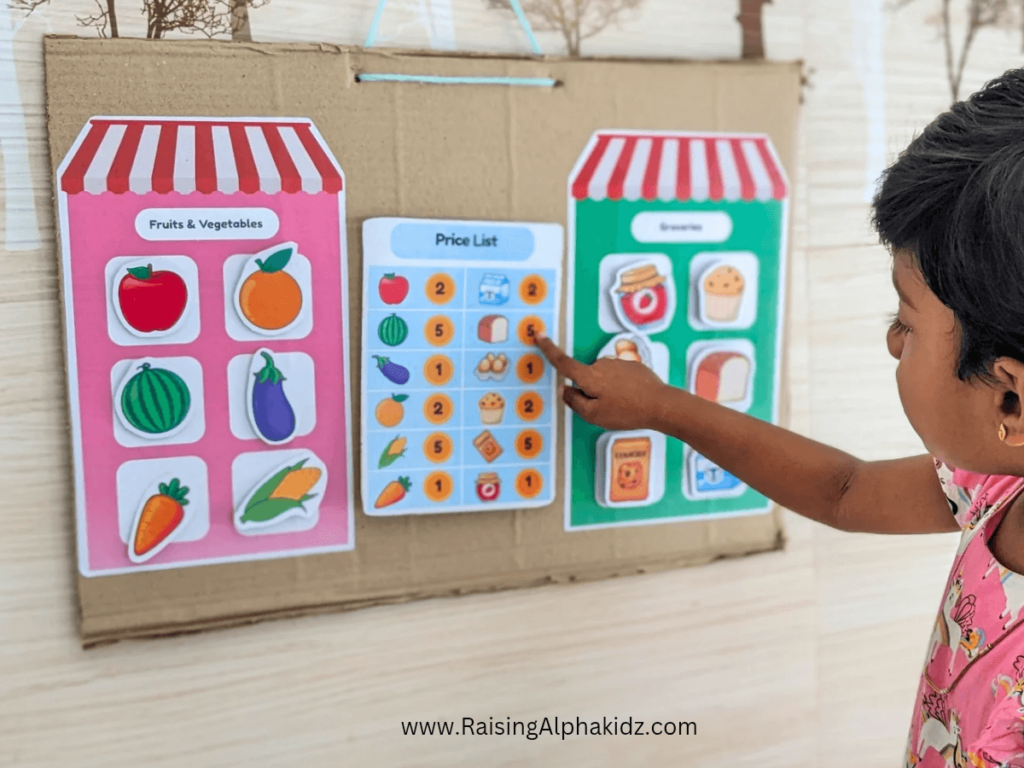
Once your child understands the basics idea behind dramatic play grocery store, move on to the advanced price list (1–10) for a little math practice.
- Teach addition: If an item costs 4, they can pay using 2 + 2 coins.
- Teach subtraction/change: If something costs 4 and they give a 5 coin, return 1 coin as change.
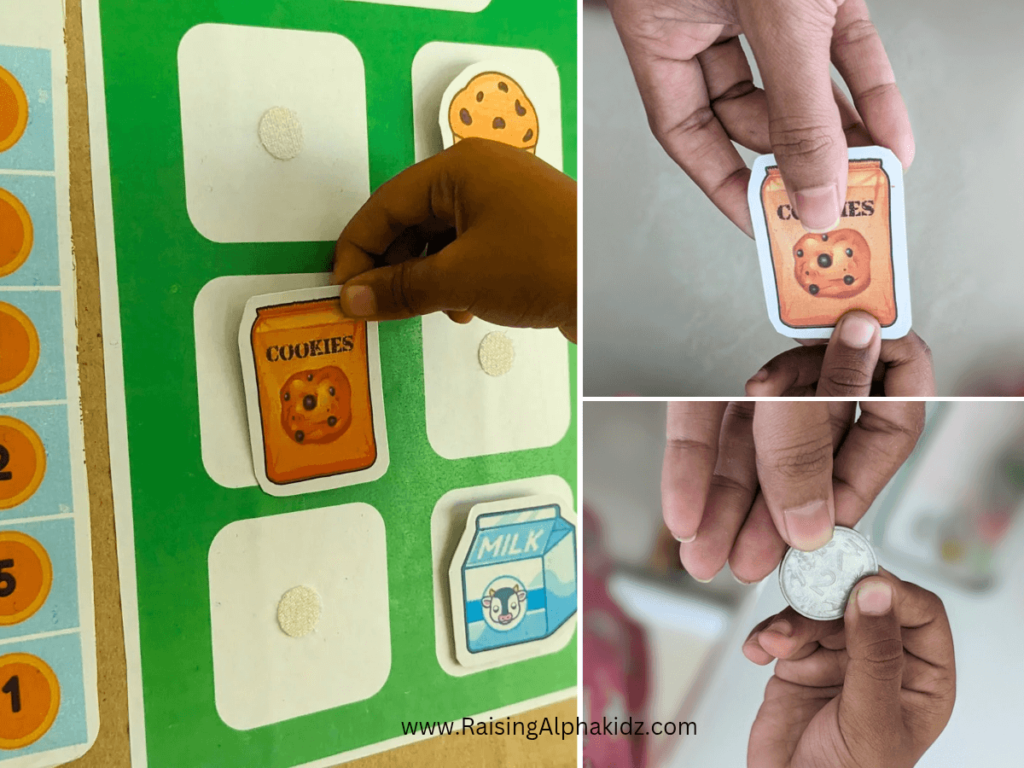
Fun Challenge for Kids – “Can you shop with only 10 coins?” → makes it a budgeting game.
This way, kids practice real-life shopping, money handling, and early math skills while having fun with pretend play.
Level-Up Challenge
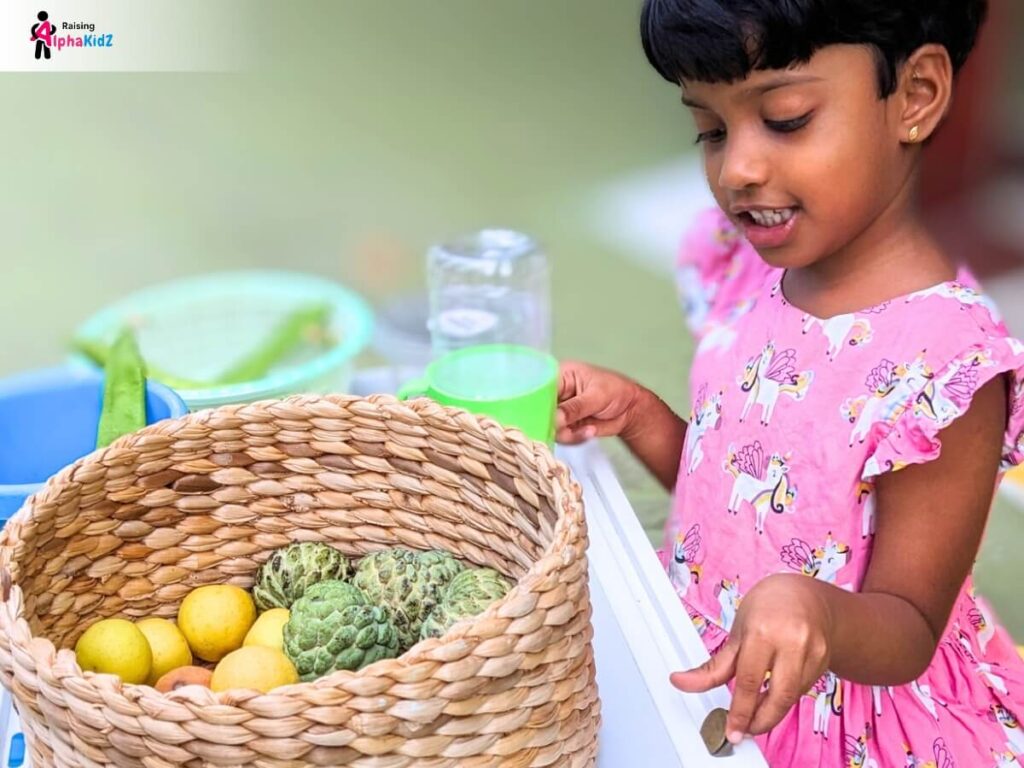
Turn your home groceries & living room into a lively supermarket. Organise a role play game pretending to sell them. Use real coins and notes (with supervision) to practice counting and giving change.
Parent’s Poll
Your message has been sent
Download Pretend Play Grocery Store Free Printable PDF
Why a Pretend Play Shop Works
Role-playing as a shopkeeper or customer helps kids connect abstract money concepts to real-life scenarios to teach kids about money. By handling coins, comparing prices, and making “transactions,” they learn:
- Coin recognition: Atactile learning experience with actual coins.
- A chance to recognize real currency they’ll use in everyday life.
- A better sense of value and money handling compared to toy coins.
- Basic math: Adding/subtracting to hit the right price.
- Decision-making: Budgeting for what they can “afford.”
- Social skills: Communicating needs and negotiating.
What Kids Learn From Role playing
- Financial Literacy: Understanding earning, spending, and saving.
- Math Skills: Counting, addition, subtraction.
- Critical Thinking: Solving “how to pay” challenges.
- Confidence: Handling real-world tasks independently.
More Life Skills Activity To Try Out
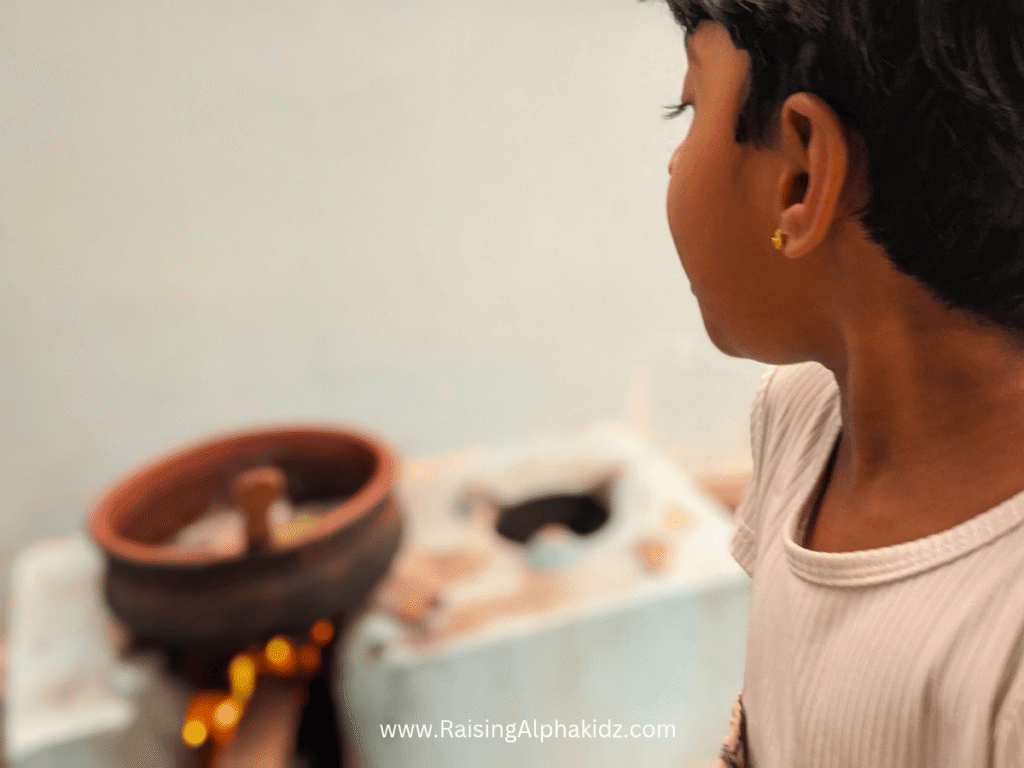
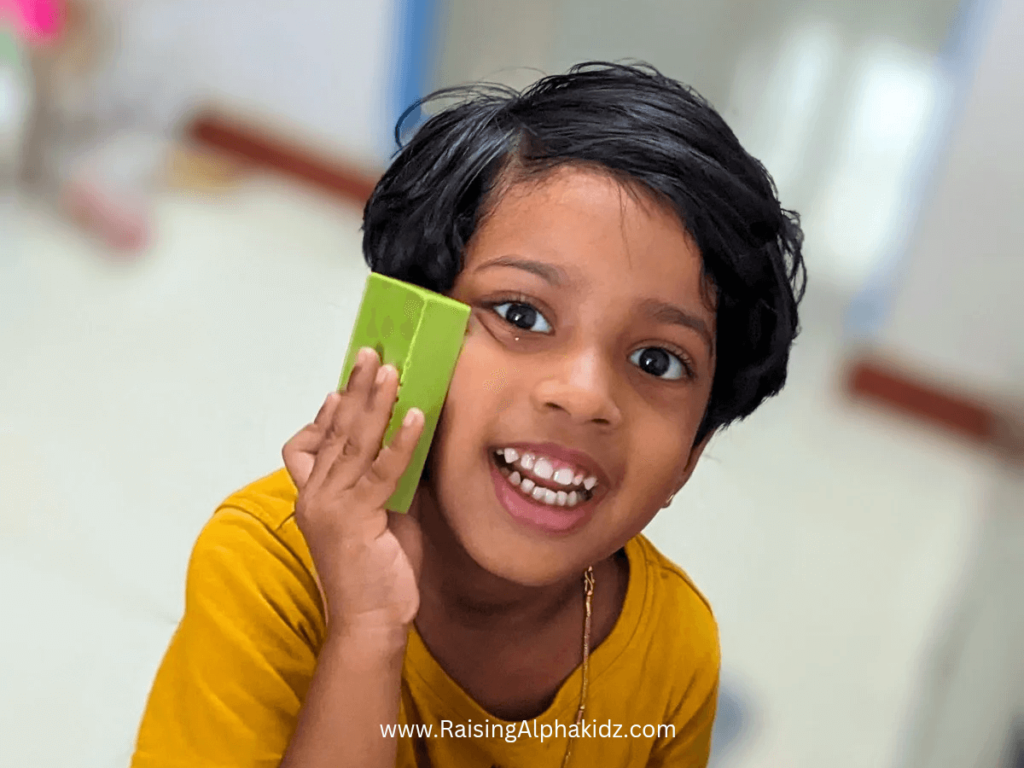
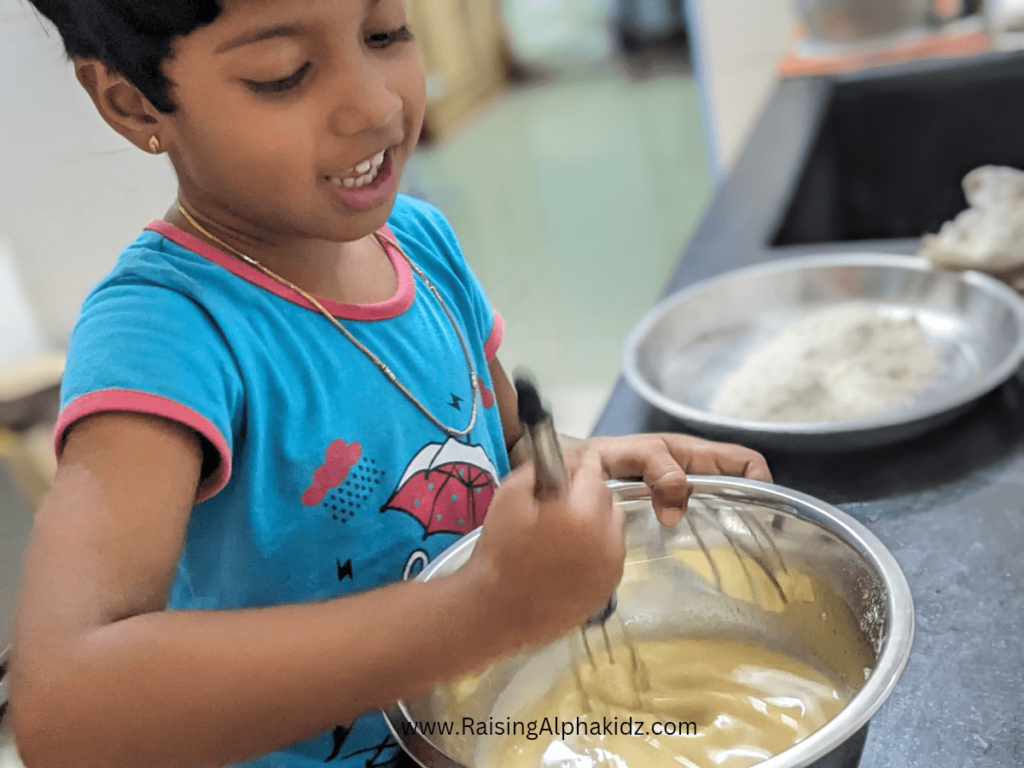
Checkout Life Skill Activities Archive
Frequently Asked Questions
How to teach kids the concept of money?
Use real coins in pretend scenarios like shopping. Start with identifying coin values and gradually introduce transactions.
When to teach kids about money?
Around ages 4–6 is ideal to begin simple concepts like coin value and counting.
How can I make teaching money fun?
Use games, role-play activities, and hands-on play like this pretend shop setup.
How to teach kids to count money?
Start with low denominations (1, 2, 5). Use addition of coins to make bigger values. Gradually teach them how to give or receive change.
You Might Also Like: Counting Activities For kids
The Pretend Play Shop Activity is more than just fun—it’s a powerful, interactive way to teach kids the value of money, counting, and basic arithmetic. With real coins, visual aids, and role-play, children can build essential life skills while having a blast.
Download your free printable shop activity now and get started on a playful learning journey with your child!

